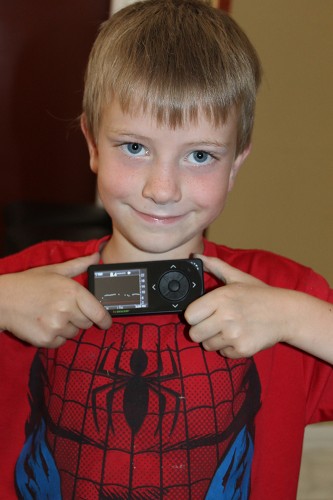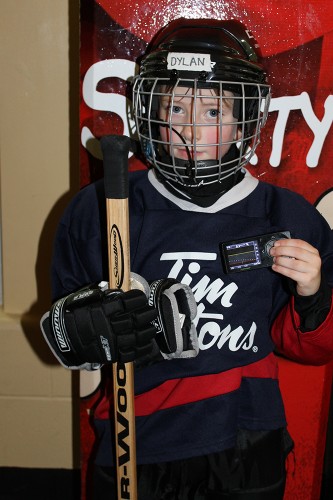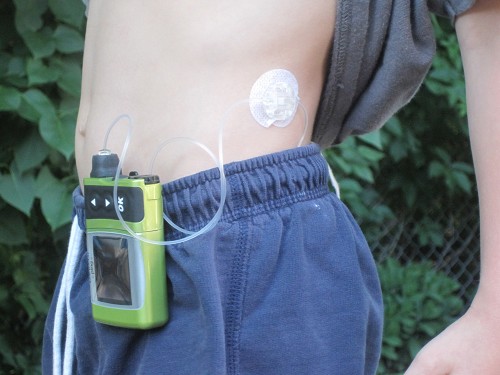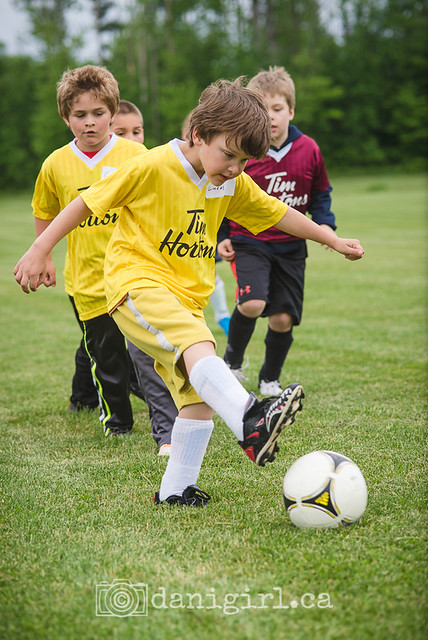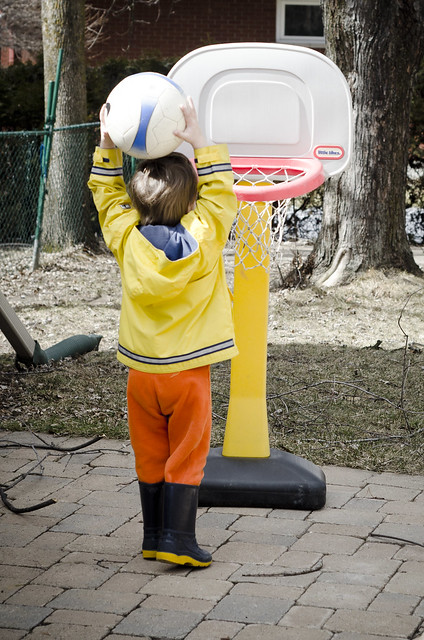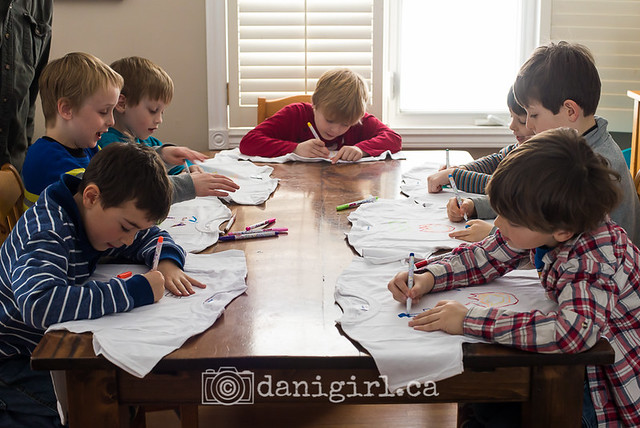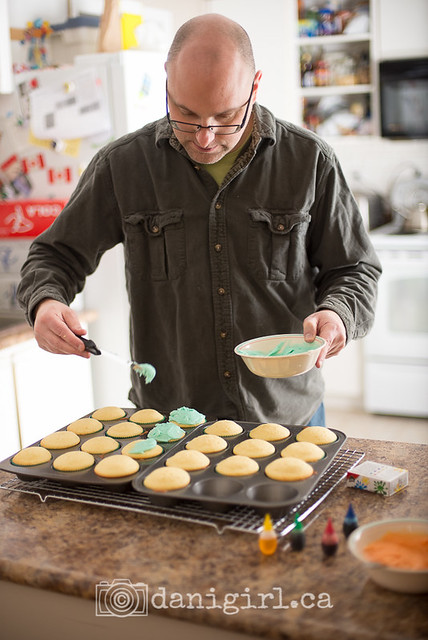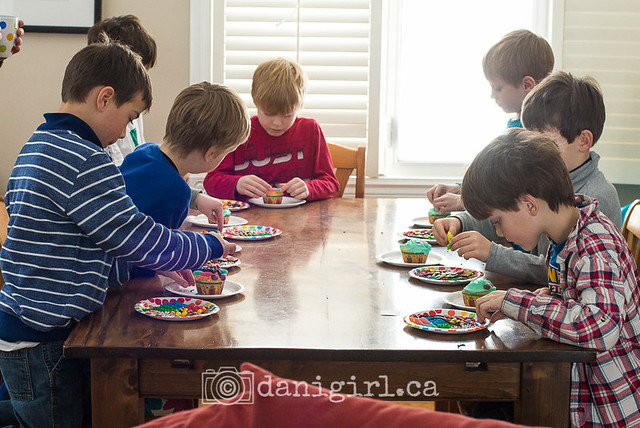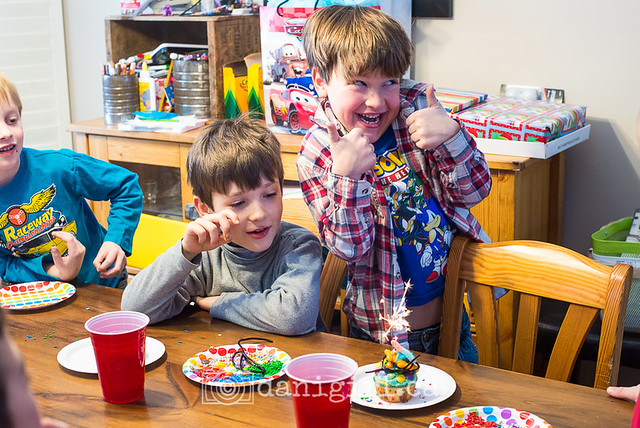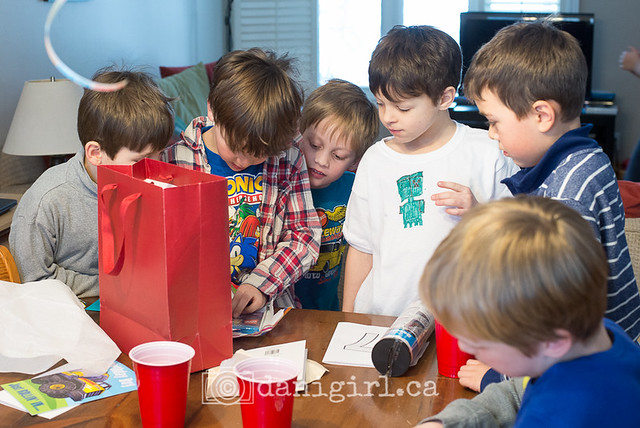Thanks to Facebook, I know that five years ago today I wrote this post. Tristan is now in middle school and safely walks to and from the bus stop without incident. What I find charming is that he was in Grade 3 when I wrestled with the idea of the risk of letting him walk home by himself, and Lucas in Grade 2 has done it several times now without incident or angst on my part. Not only do the boys grow up, but the parents do, too. 🙂
I am standing at the fence as I do every day, waiting for the bell to ring and the tsunami of energetic children to come spilling out of the school. I brace myself, as I do every day, for Simon’s enthusiastic hug that will one day knock me clear off my feet. Tristan too still hugs me, but in a more reserved and shy way that leads me to believe that while third graders still bestow public hugs upon parents, I’d best be prepared in case fourth graders do not.
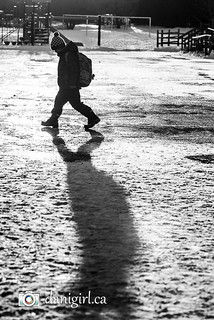 We’re headed toward the car together when Tristan stops. “Mom, can I walk home by myself?” he asks. We’ve talked about this a few times before. We live exactly 0.9 km away from the school, down one reasonably quiet and safe street with a sidewalk and two very quiet streets with no sidewalks. We’ve walked it together on many occasions, and I know Tristan prefers to walk. Most days, however, we have to drive as I make it to the school from work with barely a few minutes to spare, and we still have to drive over to pick up Lucas from daycare a couple of blocks in the opposite direction.
We’re headed toward the car together when Tristan stops. “Mom, can I walk home by myself?” he asks. We’ve talked about this a few times before. We live exactly 0.9 km away from the school, down one reasonably quiet and safe street with a sidewalk and two very quiet streets with no sidewalks. We’ve walked it together on many occasions, and I know Tristan prefers to walk. Most days, however, we have to drive as I make it to the school from work with barely a few minutes to spare, and we still have to drive over to pick up Lucas from daycare a couple of blocks in the opposite direction.
I take a searching look at his face, weighing in my mind the walk, the traffic, the buses, the snow, his relative trustworthiness, how long it will take me to pick up Lucas and make it home, and my mother’s reaction if and when she ever hears that I’d let him walk by himself. Another part of my mind is busy admiring the fat snowflakes caught in his gorgeous eyelashes and how his gray-green eyes mimic the stormy clouds above us. He looks so grown up to me in that heartbeat of a minute, pleading his case not with words but by simply returning my gaze. It’s the briefest of exchanges, and yet it resonates with me as a milestone in progress. I can trust him or not, trust the world or not. The choice is mine.
“Are you sure you know the way?” I ask. I make him describe it to me, each corner and turn. We’ve walked it a dozen times and driven it a hundred — I’m pretty sure we could both do it blindfolded. I briefly wonder if we should ponder this more, hold a family council and debate the pros and cons, but in this moment I trust my instincts and acquiesce.
“Okay, but you go straight home,” I tell him. “And if you get lost, I want you to step back from the road and just sit down on someone’s lawn, okay? No wandering around. If you make a wrong turn, stop moving and I will come and find you.” It’s less than a 10 minute walk with three intersections. There is really so little chance of him being lost that I can only laugh at myself and the lasting impressions of the time I got lost the first time I walked home by myself from a new school back in 1975. Remember that one, Mom?
As expected, Simon also wants a piece of the deal once it’s brokered, but I’m having none of that. First, being older must come with some privileges, and second, I think walking home is enough of a test without being responsible for minding your little brother at the same time. Simon, who generally prefers driving to school over walking anyway, is easily persuaded that walking alone is more of a second or third grade sort of activity.
As we pull out of the parking lot, I scan my rearview mirror for signs of Tristan and can see him bobbing along in the stream of children burbling down the sidewalk. It takes me only a few minutes to retrieve Lucas, and although respect all traffic laws regarding speed and full stops, I do forgo the usual end of day chat with his caregiver in my haste to pack him up and get him out.
We pass by the school, and I begin scanning the sidewalk and snowbanks for Tristan’s blue snowsuit and black watch cap. There’s no sign of him on the way home and as I pull in to the driveway I catch sight of him, swinging gently and patiently on the porch swing, with not even a self-satisfied grin on his face.
The next day when I meet them at the fence, I expect Tristan to ask to walk home by himself again. I’m secretly pleased when he does not. He may have trod a few more snowy footprints on the road to independence, but I’m glad he still knows I’ve got a warm car standing by for those most bitter and blustery days.

